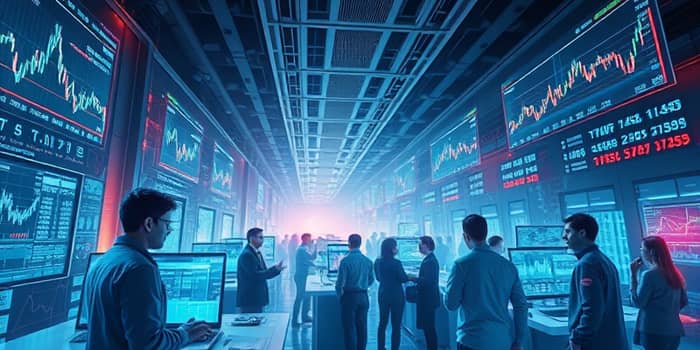
In 2025, the fusion of finance and technology has ushered in an era where AI-driven insights dictate market momentum and reshape the future of trading.
From Wall Street to decentralized crypto platforms, algorithms are no longer a luxury—they are the cornerstone of strategic decision-making.
The journey of artificial intelligence in financial markets began with rudimentary rule-based systems in the late 20th century.
Over decades, it has matured into a sophisticated ecosystem powered by advanced models capable of processing terabytes of information in seconds.
Today, AI is responsible for 89% of global trading volume, highlighting the profound trust institutions place in automated strategies.
Modern market analysis rests on a foundation of several key AI techniques:
These technologies operate in concert to identify actionable signals and deploy trades faster than any human can react.
AI’s rise in market analysis is driven by several compelling benefits:
As cloud services and APIs grow more accessible, even individual investors can harness analytic power once reserved for hedge funds.
Industry leaders and retail platforms alike showcase AI’s transformative impact:
JP Morgan’s LOXM algorithm optimizes equity trades by leveraging historical patterns and real-time order flow.
Quant hedge funds deploy proprietary machine learning suites, adjusting risk on the fly and capturing fleeting market inefficiencies.
On the retail side, platforms like Trade Ideas integrate AI-based signals and portfolio recommendations, empowering individual users with institutional-grade insights.
In high-frequency trading, exchanges now match orders in microseconds, driven almost entirely by AI orchestrating complex high-speed algorithmic strategies.
Despite its advantages, AI-driven trading introduces new complexities and hazards:
Global regulators are racing to develop frameworks that balance innovation with investor protection and market stability.
North America currently dominates AI trading software revenues, accounting for 37.2% of the market, while Asia-Pacific emerges as the fastest-growing hub, especially in Singapore and Hong Kong.
Cross-asset platforms are gaining traction, enabling unified risk controls across stocks, forex, commodities, and crypto.
Many institutions adopt hybrid models where AI generates insights and humans make the final decisions, blending agility with expert judgment.
Looking ahead, key innovations include deep learning networks tackling ever more complex correlations; quantum computing prototypes promising unprecedented speed for optimization tasks; decentralized AI platforms exploring trustless environments for crypto trading; and adaptive regulatory frameworks evolving to oversee AI-driven markets.
As we advance deeper into the 21st century, AI’s role in market analysis will only intensify, redefining how capital flows and risk is managed.
By embracing these technologies responsibly and nurturing transparent frameworks, traders and institutions can unlock new frontiers of efficiency and performance.
The fusion of human insight and machine precision heralds a future where strategic decisions are sharper, faster, and more resilient than ever before.
References













